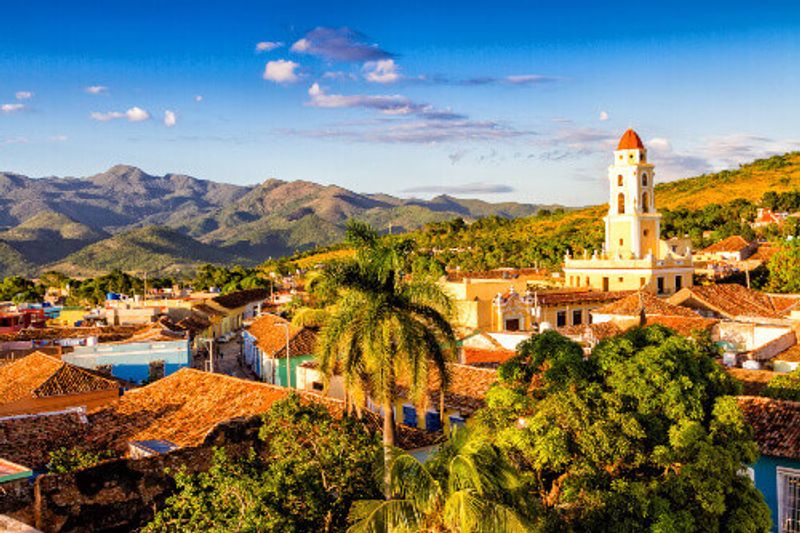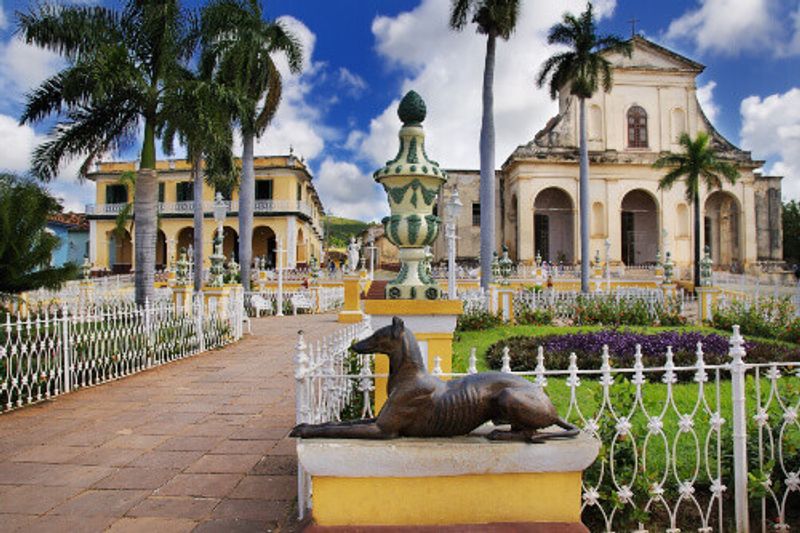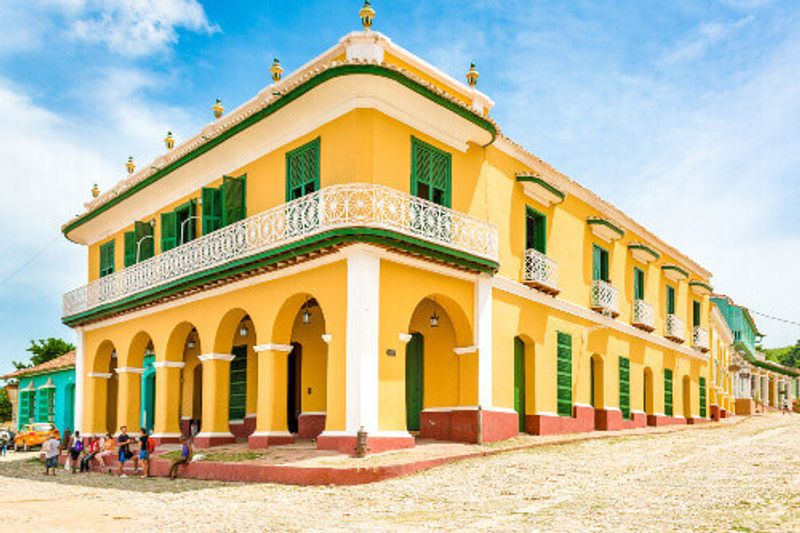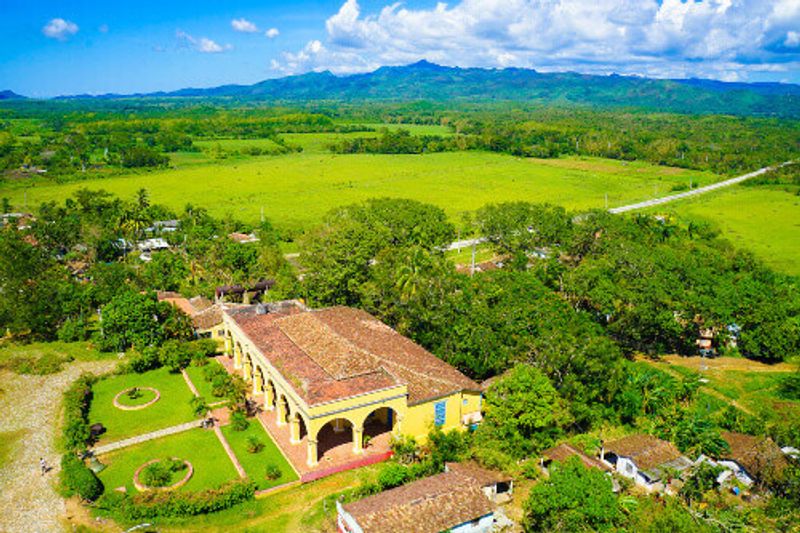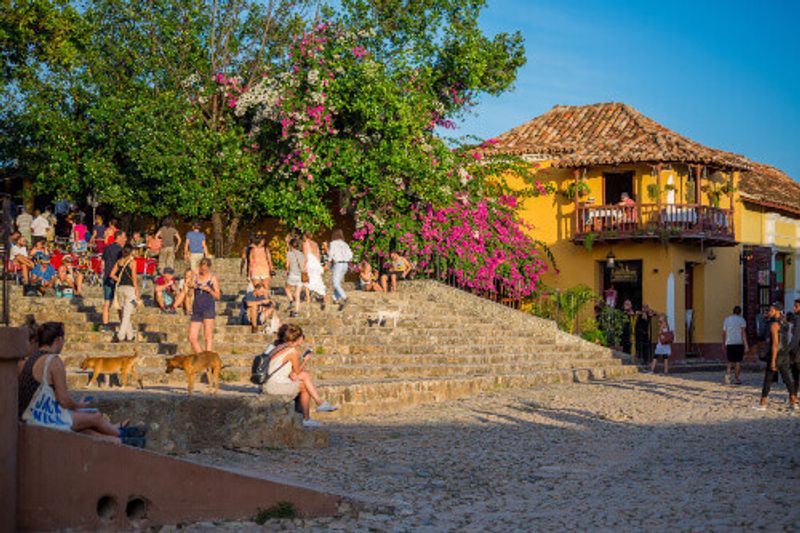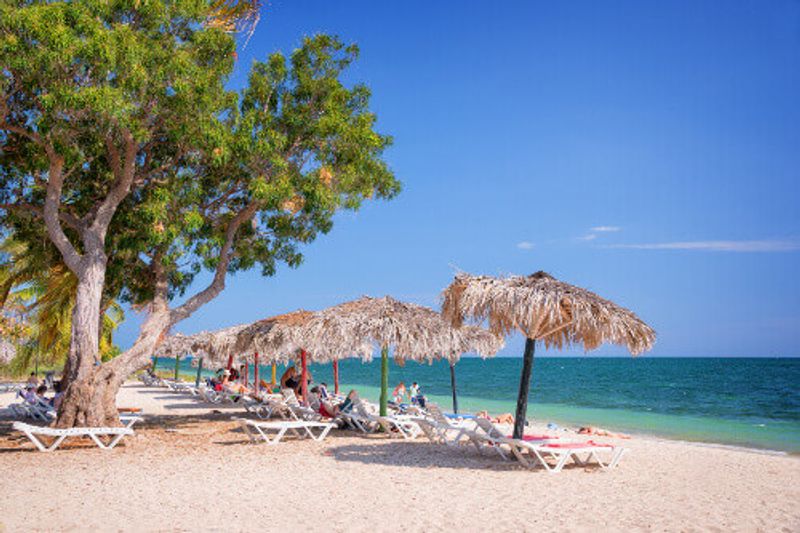This former sugar town has some of the best preserved architecture in Latin America
With its terracotta-tiled roofs and brightly coloured buildings, Trinidad is a wonderfully well-preserved example of a wealthy Caribbean sugar town. Dating back to the 16th century, this coastal city is one of the country’s most popular destinations thanks to the cobblestone streets, beautiful churches and wonderful architecture that remains so nicely intact.
The architecture is UNESCO-listed to safeguard the town that was established in 1514 by conquistador Diego Velázquez de Cuéllar. It has the best examples of well-preserved colonial architecture of anywhere in the country or, arguably, of anywhere in Latin America.
Plaza Mayor, the main square in the city, is a great place to start exploring. At one end of the square sits the largest church in Cuba the Iglesia Parroquial de la Santisima Trinidad. At the other end is the Convento de San Francisco. The building has variously acted as a convent, church and jail, is now the home of the National Museum of the Struggle Against Bandits—which tells of the capture of opponents of the 1959 Revolution. Climb to the top of the yellow and green bell tower for gorgeous views over the city.
The Museum of Colonial Architecture gives visitors a deeper understanding of the types of buildings and architecture styles in the city, as well as showing off a number of customised decorative features that were used in these buildings.
One great example of a colonial mansion is Palacio Brunet—formerly owned by the sugar baron Conde de Brunet in the mid 19th century, it is today a museum featuring art and furniture from the original house. Also showing off the city’s architecture at its finest is Casa de Aldeman Ortiz, once the home of a slave trader and former mayor of the city it's now an art school and gallery.
The sugar trade, and the slave trade that built up around it, made some families incredibly rich in Trinidad. And many of the disused sugar mills and slave dormitories can be seen at the Valley of the Sugar Mills (look out for the watch towers where runaway slaves were spotted; they're still standing).
Like most towns in Cuba, music plays a huge part in the city’s life and Trinidad is no exception. Locals hang out around the Casa de la Musica off Plaza Mayor, listening to musicians in the evening sunshine.
Just to the north of the city is the vast National Park—a great place to explore the mountains on foot or horseback and discover the caves and waterfalls at Topes De Collantes. Twenty minutes south of the town centre is Ancón Beach (Playa de Ancón), one of the best beaches on the island and a great place to snorkel or dive the reefs and corals. Ancón is also a great place to sit back with a mojito and watch the local fishermen come and go with their catch, some of which is then served at the beachfront restaurants.
